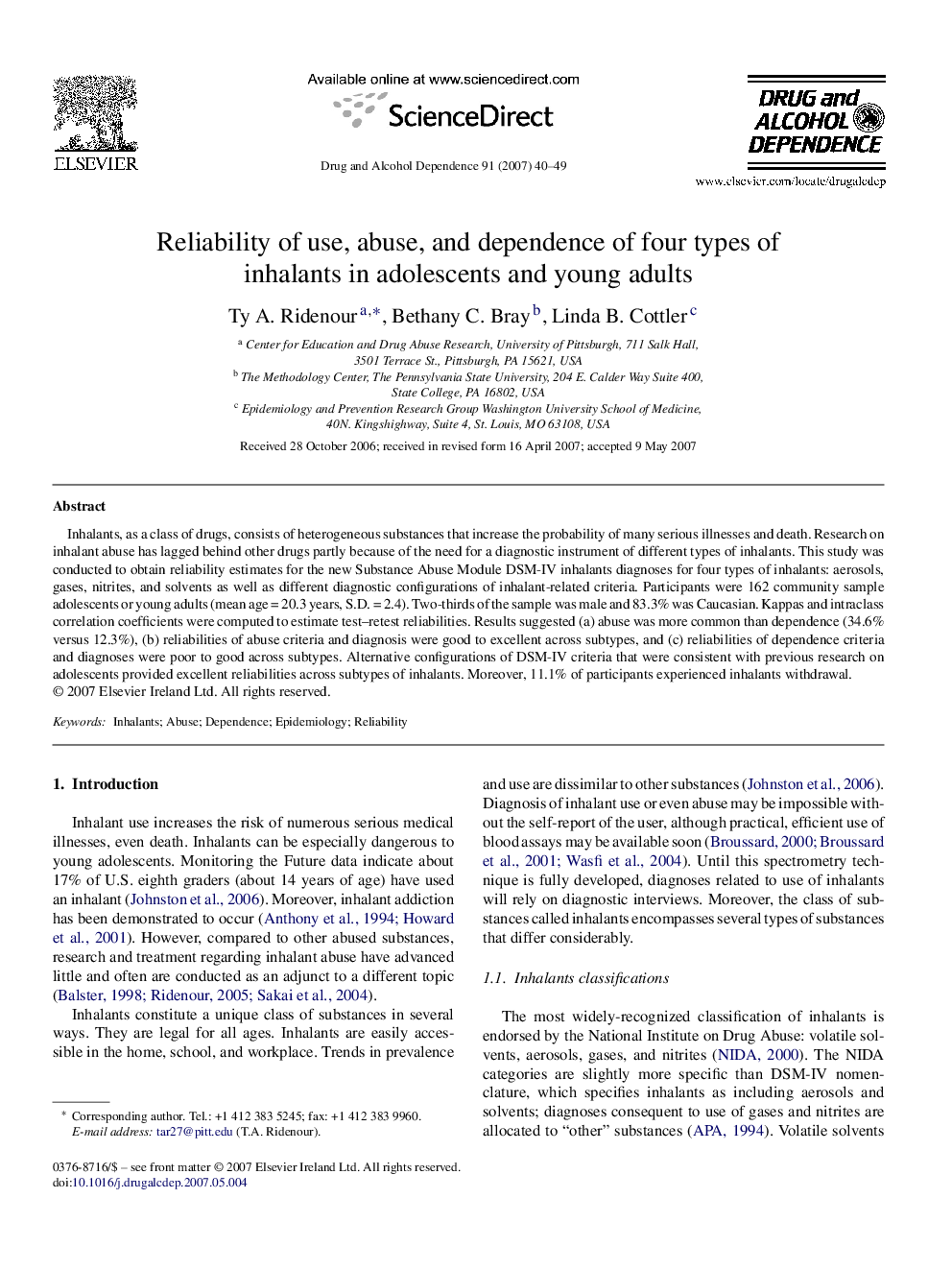| Article ID | Journal | Published Year | Pages | File Type |
|---|---|---|---|---|
| 1071352 | Drug and Alcohol Dependence | 2007 | 10 Pages |
Inhalants, as a class of drugs, consists of heterogeneous substances that increase the probability of many serious illnesses and death. Research on inhalant abuse has lagged behind other drugs partly because of the need for a diagnostic instrument of different types of inhalants. This study was conducted to obtain reliability estimates for the new Substance Abuse Module DSM-IV inhalants diagnoses for four types of inhalants: aerosols, gases, nitrites, and solvents as well as different diagnostic configurations of inhalant-related criteria. Participants were 162 community sample adolescents or young adults (mean age = 20.3 years, S.D. = 2.4). Two-thirds of the sample was male and 83.3% was Caucasian. Kappas and intraclass correlation coefficients were computed to estimate test–retest reliabilities. Results suggested (a) abuse was more common than dependence (34.6% versus 12.3%), (b) reliabilities of abuse criteria and diagnosis were good to excellent across subtypes, and (c) reliabilities of dependence criteria and diagnoses were poor to good across subtypes. Alternative configurations of DSM-IV criteria that were consistent with previous research on adolescents provided excellent reliabilities across subtypes of inhalants. Moreover, 11.1% of participants experienced inhalants withdrawal.
